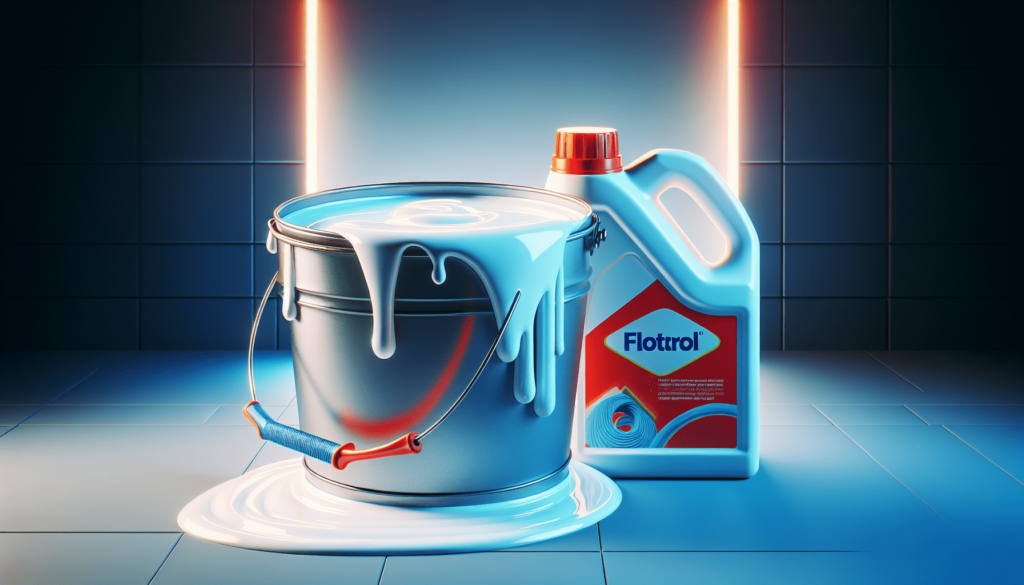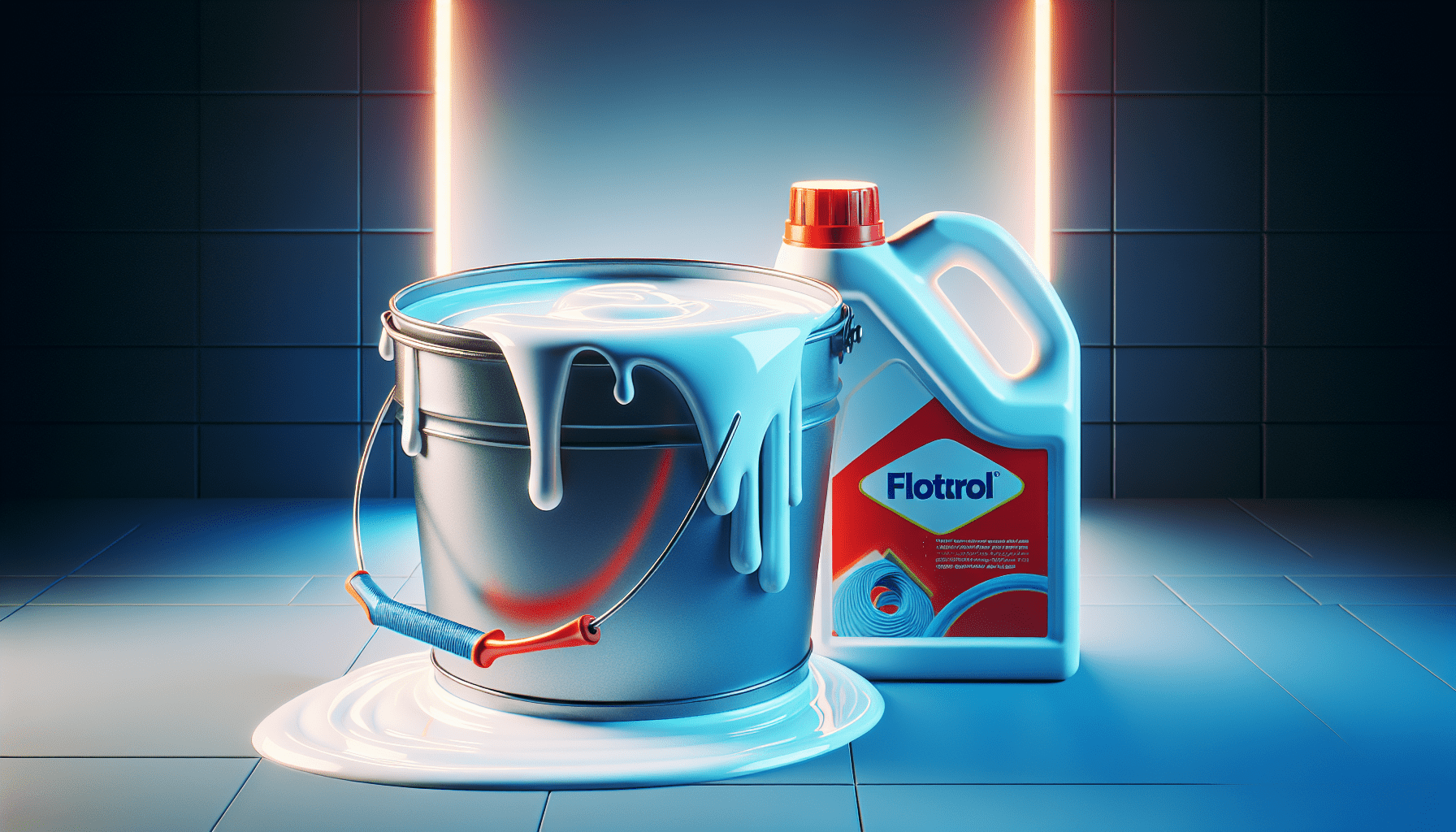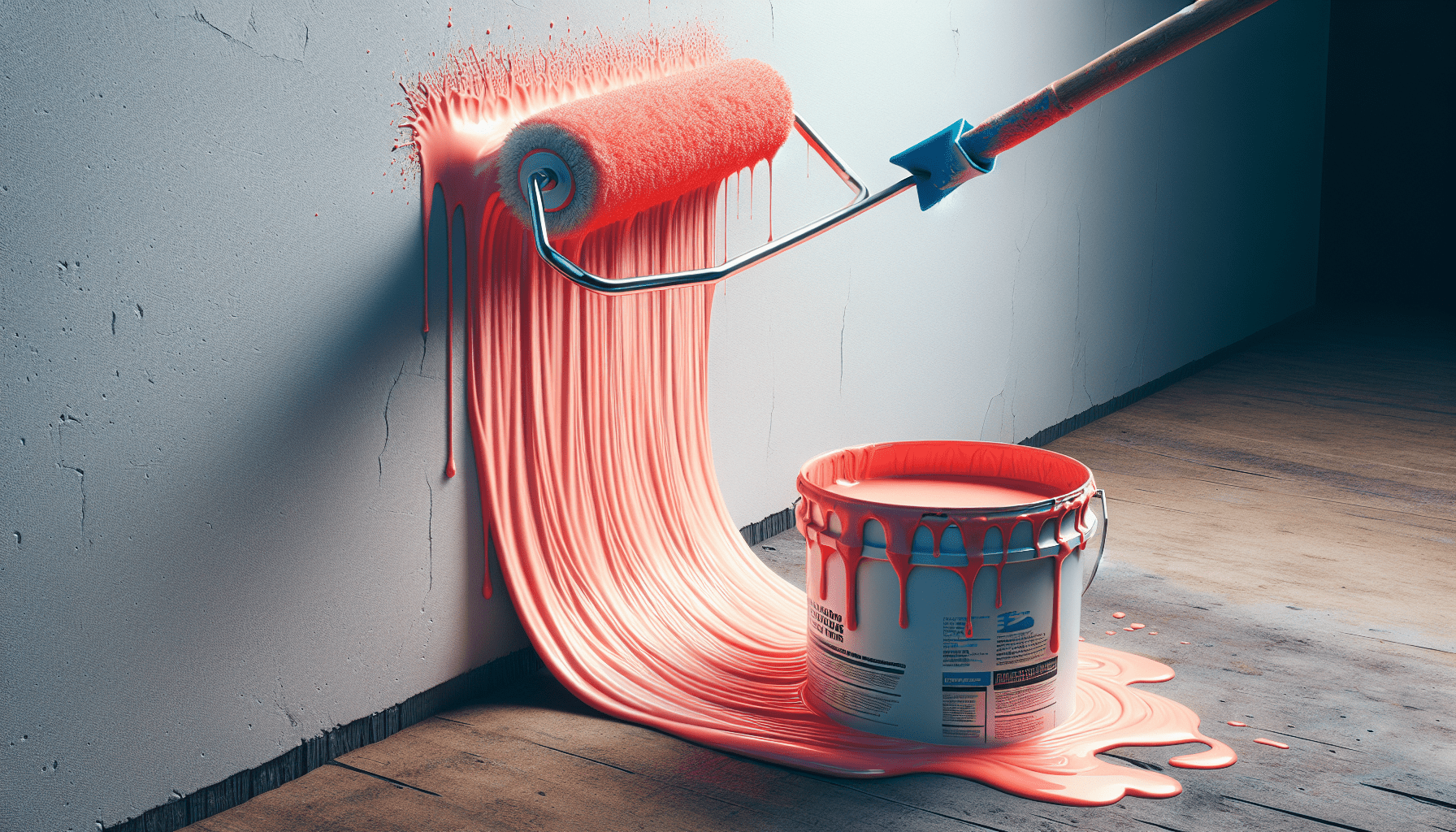In the world of painting, achieving a flawless finish can be both an art and a science. As you embark on your next project with latex paint, it becomes crucial to understand the delicate balance of additives, particularly Floetrol. This article aims to provide you with a comprehensive guide on determining the ideal amount of Floetrol to add to latex paint, ensuring optimal flow, improved leveling, and a professional-grade outcome. Whether you are a seasoned artist or just starting out, this information will empower you to achieve stunning results and elevate your painting skills to new levels of excellence.

What is Floetrol?
Floetrol is a product designed to improve the performance of latex paint by enhancing its flow and leveling properties. It is essentially a paint conditioner that can be added to latex paint to achieve a smoother and more professional-looking finish. Floetrol is made up of a blend of ingredients that work together to reduce brush marks, extend drying time, and improve paint viscosity.
Definition of Floetrol
Floetrol is a commercial paint additive specifically formulated for use with latex paints. It is a milky-white liquid with a consistency similar to that of water. When mixed with latex paint, Floetrol helps to reduce the viscosity of the paint, allowing it to flow more smoothly and evenly onto the surface being painted. This results in a more professional finish with fewer visible brush and roller marks.
Purpose of using Floetrol in latex paint
The primary purpose of using Floetrol in latex paint is to improve the overall flow and leveling properties of the paint. Without Floetrol, latex paint can be thick and difficult to brush or roll onto a surface, resulting in an uneven and unappealing finish. By adding Floetrol to the paint, it becomes easier to apply and provides a smoother, more even coverage.
Additionally, Floetrol also helps to extend the drying time of latex paint, which is particularly useful in hot and dry climates where paint can dry too quickly. This extended drying time allows for better leveling of the paint, minimizing the appearance of brush strokes and roller marks. Ultimately, using Floetrol in latex paint helps both professional painters and DIY enthusiasts achieve a more flawless and professional-looking finish.
Benefits of using Floetrol
The use of Floetrol in latex paint offers several benefits to painters of all skill levels. One of the primary benefits is improved flow and leveling, resulting in a smoother and more even finish. This is especially important when painting large surfaces, such as walls or ceilings, where visible brush and roller marks can be more prominent.
Furthermore, the use of Floetrol helps to reduce the likelihood of paint splattering or dripping during application. This allows for a cleaner and more efficient painting process, minimizing the need for touch-ups or rework. Additionally, Floetrol can aid in reducing paint wastage by ensuring better coverage with fewer coats.
Another advantage of using Floetrol is its ability to enhance the open time of latex paint. Open time refers to the period during which the paint remains workable before it starts to dry. By extending the open time, Floetrol allows painters more time to achieve a smooth and seamless finish without rushing against the drying clock.
Overall, the benefits of using Floetrol in latex paint include improved flow and leveling, reduced brush and roller marks, decreased paint splattering, more efficient coverage, and extended open time for better workability.
Factors to Consider
When using Floetrol in latex paint, there are several factors to consider to ensure optimal results. These factors include the type of paint being used, the pouring technique employed, the desired consistency of the paint, and the climate and humidity conditions.
Type of paint
Different types of latex paint may have varying levels of viscosity and drying times. It is important to consider the specific characteristics of the paint being used when determining the appropriate amount of Floetrol to add. Thicker paints may require a higher ratio of Floetrol to achieve the desired flow and leveling, while thinner paints may need less.
Pouring technique
The technique used to apply latex paint can also impact the amount of Floetrol needed. Different pouring techniques, such as brush, roller, or spray application, may require different levels of Floetrol to achieve the desired results. Experimenting with different application methods and observing how the paint behaves can help determine the appropriate ratio of Floetrol to use.
Desired consistency
The desired consistency of the paint should also be taken into consideration. Some individuals prefer a thicker paint for more texture, while others prefer a smoother finish with a thinner consistency. Adjusting the amount of Floetrol added can help achieve the desired consistency, ensuring that the paint flows and levels properly without being too thin or too thick.
Climate and humidity
Lastly, the climate and humidity conditions in which the painting is taking place can affect the drying time and behavior of the paint. In hot and dry climates, the paint may dry faster, making it difficult to achieve a smooth finish. In such cases, increasing the amount of Floetrol can help extend the drying time, allowing for better leveling and reduced brush marks.
Considering these factors and making adjustments accordingly will help ensure the best possible outcome when using Floetrol in latex paint.
Recommended Ratios
When using Floetrol in combination with latex paint, there are standard ratios to consider, as well as different ratios for specific effects and adjustments for different conditions.
Standard Ratios
As a general guideline, the recommended ratio for mixing Floetrol with latex paint is approximately 1 quart (32 ounces) of Floetrol per gallon of paint. This ratio offers a good starting point for achieving improved flow and leveling without significantly altering the properties of the paint.
However, it is important to note that the desired consistency and personal preference can vary, so the ratio may need to be adjusted accordingly. Some painters may prefer a slightly thicker or thinner consistency and can adjust the ratio of Floetrol accordingly.
Different Ratios for specific effects
In addition to the standard ratio, different ratios can be used to achieve specific effects. For example, if a more fluid consistency is desired for techniques like pouring or glazing, a higher ratio of Floetrol to paint may be required. Experimentation and practice are key to finding the ideal ratio for different effects.
Adjusting ratios for different conditions
The recommended ratios may need to be adjusted based on the specific conditions in which the painting is taking place. As mentioned earlier, hot or dry climates can accelerate drying time, making it necessary to increase the amount of Floetrol to extend the workable open time. Similarly, in cooler or more humid conditions, reducing the amount of Floetrol may be necessary to prevent the paint from becoming too thin and losing its viscosity.
It is important to note that the ratios provided are not set in stone and serve as a starting point. Adjusting the ratio to suit individual preferences and environmental conditions will result in a better outcome when using Floetrol in latex paint.
Mixing Process
To achieve the desired consistency and optimal performance when using Floetrol in latex paint, it is important to follow a specific mixing process. This process involves preparing the materials, measuring the paint and Floetrol, and thoroughly mixing them together.
Step 1: Prepare your materials
Before starting the mixing process, gather all the necessary materials. This includes the latex paint, Floetrol, measuring containers (such as quart cans or measuring cups), and stirring sticks or paint mixers. Having everything readily available will make the mixing process smoother and more efficient.
Step 2: Measure the paint
Start by measuring the exact amount of latex paint needed for the project. This can be done using quart cans or measuring cups, depending on the quantity required. Accurate measuring ensures consistency and helps achieve the desired results.
Step 3: Measure the Floetrol
Next, measure the appropriate amount of Floetrol to be added to the paint. Refer to the recommended ratios discussed earlier and adjust as needed based on personal preference, desired consistency, and environmental conditions. The Floetrol should be poured slowly and steadily into the paint, taking care to avoid spillage.
Step 4: Mix thoroughly
Once the paint and Floetrol are measured, it is time to mix them together thoroughly. Use a stirring stick or a paint mixer attachment for a power drill to ensure a proper blend. It is important to mix the two components slowly and evenly to avoid introducing air bubbles into the mixture. Continue stirring until the Floetrol is fully incorporated into the paint, resulting in a smooth and consistent mixture.
Following this mixing process will help ensure that the Floetrol is evenly distributed throughout the paint, enhancing its flow and leveling properties and achieving the desired consistency.

Testing the Mixture
Once the Floetrol and latex paint are mixed together, it is crucial to test the mixture before applying it to the desired surface. Testing the consistency and flow of the paint will help identify any adjustments that need to be made before starting the actual painting process.
The consistency test
To perform the consistency test, take a small amount of the mixed paint and observe its texture and thickness. Apply the paint onto a test surface, such as a piece of cardboard or scrap material, and assess how well it spreads and levels. The consistency should be smooth and easy to work with, without being too thin or too thick. If adjustments need to be made, add more latex paint to thicken or more Floetrol to thin the mixture, and repeat the test until the desired consistency is achieved.
The flow test
In addition to the consistency test, it is important to test the flow of the paint. Pour a small amount of the mixed paint onto a tilted surface and observe how it flows and spreads naturally. The paint should have a smooth, self-leveling motion, without becoming too runny or forming excessive drips. If the flow is not ideal, adjust the ratio of Floetrol or latex paint and repeat the flow test until the desired flow and leveling are achieved.
By conducting these tests, any potential issues with the mixture can be identified and corrected before starting the actual painting process, ensuring a more successful and satisfying outcome.
Troubleshooting
While using Floetrol in latex paint generally results in improved flow and leveling, there may be instances where troubleshooting is necessary to address specific issues that may arise during the painting process. Here are some common issues and their possible solutions:
Excessive texture
If the paint mixture results in excessive texture or undesirable brush or roller marks, it may be an indication of too little Floetrol being used. In such cases, remixing the paint with a higher ratio of Floetrol can help achieve a smoother finish. Additionally, adjusting the pouring technique or using different tools, such as a foam roller or sprayer, can also minimize texture issues.
Cracking or crazing
Cracking or crazing refers to the appearance of fine lines or cracks in the dried paint surface. This issue can occur if the paint mixture is too thin or if the drying time is too quick. To remedy this, add more paint to thicken the mixture or increase the amount of Floetrol to extend the drying time. Properly preparing the surface and applying multiple thin coats of paint can also help prevent cracking or crazing.
Opacity issues
Opacity issues may arise if the paint mixture is too thin or if the paint itself is not sufficiently pigmented. Increasing the ratio of paint to Floetrol can help achieve better opacity. Additionally, using high-quality, pigmented paint and applying multiple coats can also improve the overall opacity of the painted surface.
Bubbles or air pockets
The presence of bubbles or air pockets in the paint can create undesirable blemishes on the painted surface. This issue can occur if the paint mixture is not stirred thoroughly or if the mixture is applied too quickly. To avoid this, make sure to mix the paint and Floetrol well, removing any visible bubbles during the mixing process. Apply the paint in thin, even coats, allowing each coat to dry properly before applying the next.
By identifying and addressing these troubleshooting issues, the use of Floetrol in latex paint can result in a more satisfying and professional finish.
Alternative Additives
While Floetrol is a widely used and effective paint conditioner for latex paint, there are alternative additives available that can offer similar benefits. Glycerin and silicone oil are two common alternatives that painters may consider.
Glycerin
Glycerin is a natural, colorless liquid that can be added to latex paint to improve flow and leveling. It helps reduce the viscosity of the paint and enhances its workability. Glycerin can also help extend the drying time, allowing for better leveling and reduced brush marks. However, it is important to note that glycerin may slightly increase the transparency of the paint, affecting its opacity.
Silicone oil
Silicone oil is another additive that can be used to improve the flow and leveling properties of latex paint. It helps reduce the surface tension of the paint, allowing it to flow more smoothly and evenly onto the surface. Silicone oil can also create interesting effects such as cells or lacing when used in pouring techniques. However, due to its oily nature, silicone oil may have a longer drying time and can potentially affect paint adhesion.
When considering alternative additives, it is important to thoroughly research and understand their properties and potential effects on the paint. Experimentation and personal preference play significant roles in determining the most suitable additive for a specific project.
Tips and Precautions
To ensure a successful and safe experience when using Floetrol in latex paint, several tips and precautions should be followed.
Start with smaller batches
It is recommended to start with smaller batches of paint when experimenting with different ratios or additives. This way, any adjustments or issues can be addressed without wasting large quantities of paint. Once the desired outcome is achieved, the ratio can be scaled up for larger projects.
Mixing multiple colors
When mixing multiple colors with Floetrol, it is important to mix them separately before combining them together. Mixing each color with the appropriate amount of Floetrol individually ensures consistent flow and leveling properties for each color. Only after each color is properly mixed should they be combined for a final mixture.
Proper ventilation
When working with paint and additives, it is essential to ensure proper ventilation in the work area. Open windows or use fans to circulate fresh air, particularly when working indoors. This helps minimize exposure to potentially harmful fumes and maintain good air quality.
Protective equipment
Wearing appropriate protective equipment, such as gloves and safety glasses, is recommended when handling paint and additives. This helps protect the skin and eyes from potential irritation or contamination. Additionally, working in a well-lit area with adequate lighting can help ensure proper visibility and reduce the risk of accidents.
Following these tips and precautions will contribute to a safer, more efficient, and successful painting experience when using Floetrol in latex paint.
Storage and Shelf Life
To maximize the shelf life and effectiveness of Floetrol, proper storage is essential.
Proper storage of Floetrol
Floetrol should be stored in a cool, dry place, away from extreme temperatures or direct sunlight. A cabinet or storage area with a consistent temperature is ideal. It is important to keep the lid tightly closed when not in use to prevent air exposure and maintain the integrity of the product.
Shelf life of the mixture
The shelf life of the mixture of Floetrol and latex paint can vary depending on various factors, including environmental conditions and the specific paint used. Generally, when stored properly, the mixture should remain usable for several months. However, it is important to note that prolonged storage or exposure to extreme temperatures can affect the performance and consistency of the mixture. It is recommended to test the mixture before each use to ensure it is still suitable for the desired project.
Conclusion
Floetrol is a valuable tool for both professional painters and DIY enthusiasts looking to achieve a smoother and more professional finish with latex paint. By improving flow and leveling, reducing brush and roller marks, and extending drying time, Floetrol enhances the overall performance and appearance of latex paint.
When using Floetrol, considering factors such as the type of paint, pouring technique, desired consistency, and environmental conditions will help determine the appropriate ratio to use. Following a specific mixing process and testing the mixture before application ensures optimal results.
While troubleshooting common issues and exploring alternative additives can further enhance the painting process, it is essential to follow tips and precautions for a safe and successful experience. Proper storage of Floetrol and monitoring the shelf life of the mixture will help maintain product effectiveness.
Ultimately, the use of Floetrol allows for experimentation and personal preference when working with latex paint, resulting in a more satisfying and customized painting outcome.



